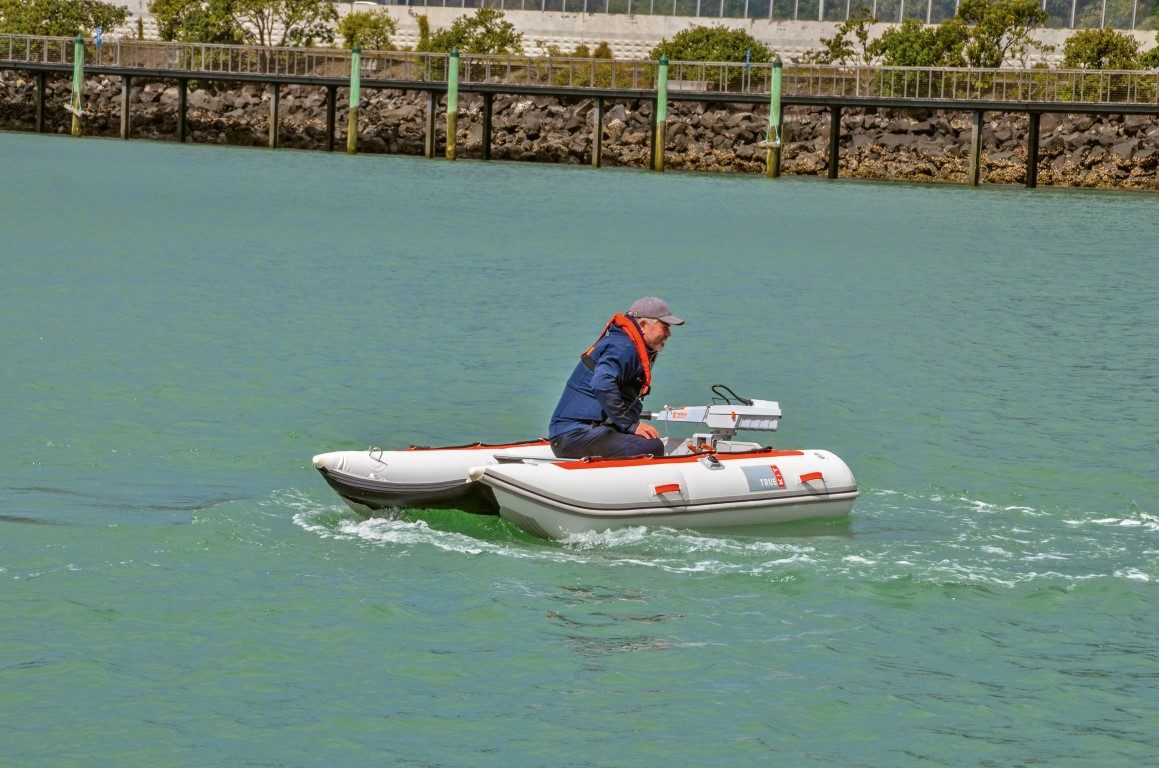

There are several good examples of fully-electric or hybrid boats, some of which we’ve reviewed for this magazine. But what’s different about Torqeedo, the German manufacturer of electric boat drives, is the range of power options it offers, from ultralight 1hp motors for kayaks right through to 80hp models (soon to be 200hp).
Torqeedo manufactures a range of inboard and outboard electric engines, some with hybrid options and some of them portable. It also manufactures high-quality batteries, so can offer complete propulsion packages.
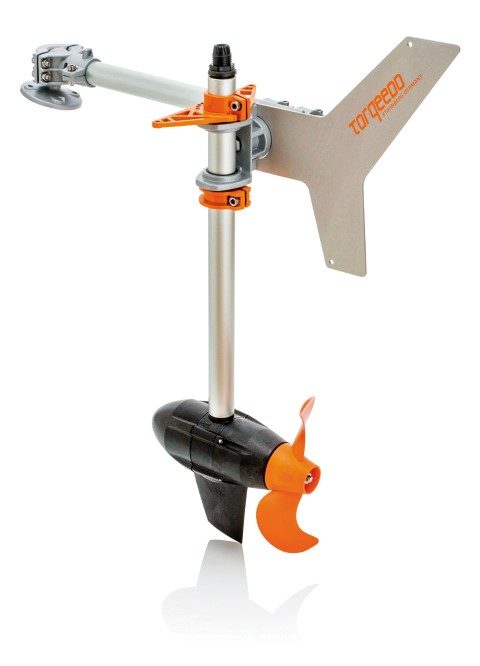
The range starts with the Ultralight, a compact but powerful electric motor weighing less than 9kg, including its high-performance 915 or 320Wh (watt-hours) lithium battery. Power from the Ultralight 403 is equivalent to a 1hp internal combustion engine, delivering speeds up to 10kph and a maximum range of 40km at lower speeds.
The Ultralight is ideal for expedition and fishing kayaks, since its steering, tilting and auto kick-up features integrate with the kayak’s existing steering system. It comes with a remote throttle control, on-board computer, GPS-based range calculator and battery charger. Spare batteries and a 45-watt solar charger are available and Torqeedo’s Torq Trac app displays interactive range information straight to your smartphone.
Next up in terms of size is the Torqeedo Travel, a clean alternative to portable petrol outboards. With the Travel there’s no need to carry fuel, no starter cord to pull, no noise or fumes and no storage issues. The Travel weighs just 9kg without the battery (14kg with battery), so it’s easy to carry, and features tools-free mounting. Batteries slot in to the top of the motor where the powerhead would be in a petrol outboard – the motor is in the lower unit is where the gear housing would be.
The Travel comes in two models, equivalent to 1.5hp and 3hp, capable of propelling vessels up to 750kg and 1.5 tonnes respectively, and in two shaft lengths. Range is up to 35km at 5.5kph, depending on vessel weight and battery size (530 or 915Wh), while charging options include domestic power sockets, 12-volt connection or a solar charger. A USB outlet will charge devices from the battery.
Like the rest of the Torqeedo range, the Travel features an onboard computer displaying range and performance data, which can also be accessed on your smart phone via the Torq Trac app.
Torqeedo’s Cruise range encompasses three outboard models and three pod drives: 2.0 (5hp), 4.0 (8hp) and 10.0 (20hp), driving vessels ranging from 3 tonnes (2.0) to 10 tonnes (10.0). The F.P. pod drives are suitable for sailing yachts.
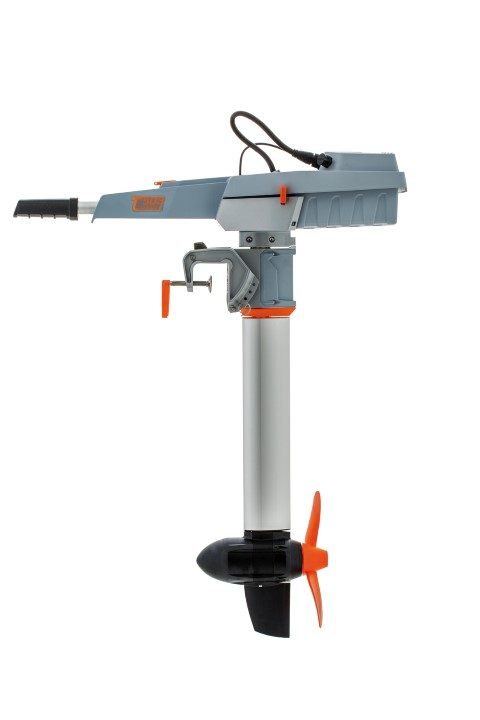
The smaller Cruise outboard models come in two shaft lengths while the 10.0 is available in three. Manual tilt is standard on the smaller outboards; the 48-volt 10.0 has electric tilt and remote throttle – a tiller throttle is coming. The smaller Cruise models are tiller or remote control.
Cruise motors can operate with modern lithium, AGM or lead-acid batteries, but Torqeedo’s Power 48-5000 and Power 26-104 batteries have been specifically developed for these engines and provide superior performance.
Further upping the power stakes, Torqeedo’s Deep Blue outboard and inboard propulsion range encompasses 40 and 80hp models (200hp coming soon), as well as a 40hp sail-drive. Hybrid packages are available and Deep Blue is compatible with hydro-generation.
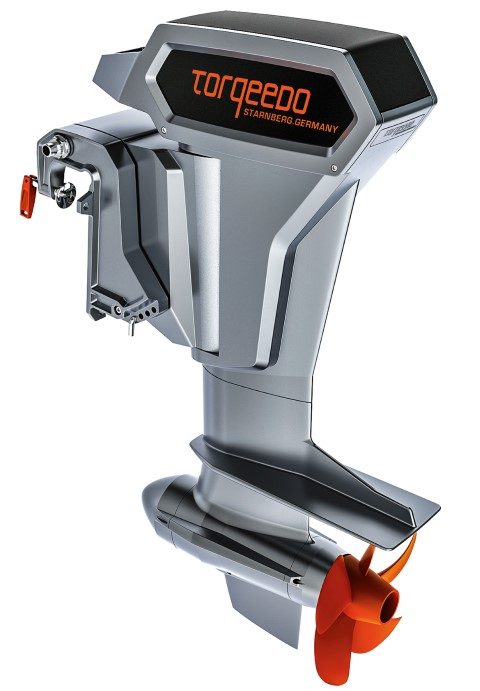
Deep Blue operates on a 360-volt system and BMW-designed I3 and I8 batteries, as used in the BMW’s electric vehicles, are optional. A nine-year warranty is offered with these batteries.
Torqeedo Cruise and Deep Blue models offer the same GPS-based onboard computer, Torq Trac app and charging options as the rest of the range.
Demo day
Power Equipment is the Torqeedo agent in New Zealand and Australia. At a recent demonstration in Auckland, Boating NZ had the opportunity to try a range of products on the water.
The motors demonstrated included the Ultralight kayak motor, Travel 1003 and Cruise 2.0 and 4.0 models. The motors were used to power a small kayak, a pair of inflatable dinghies, a Smartwave PVC runabout and a Craigcat pontoon catamaran.

Impressions across the range include instant throttle response and quiet operation. The convenience of the Travel models shouldn’t be understated either.
Performance is comparable to petrol engines of similar power, but without the noise and fumes. We quickly learned to open the electronic throttle control slowly to avoid an unexpectedly firm shove in the back – maximum torque is available the moment any throttle is applied.
Onboard computers keep you appraised of speed, power use as a percentage of maximum output, real time range and battery status. The data is easy to interpret, though the displays are a little difficult to see in bright sunlight.
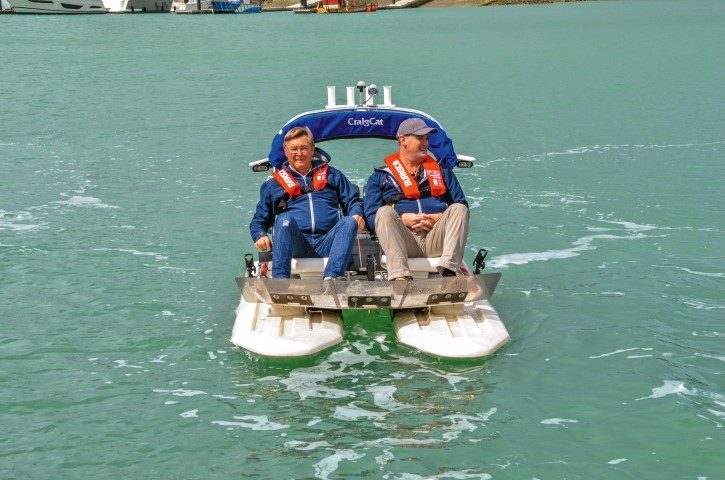
As with electric vehicles, some boaters may suffer range-anxiety, but Torqeedo propulsion systems offer very realistic run times with decent range provided operators keep a lid on throttle settings. Run the motors at full throttle and you’ll exhaust the batteries in a fairly short time, but at more modest loads, battery life is excellent. This is especially so if you opt for more expensive high-quality, lightweight lithium batteries.
For the models we tried, in most applications six hours run time is achievable on one charge. That’s longer than most people would run their boat engines during the course of a day’s boating.




